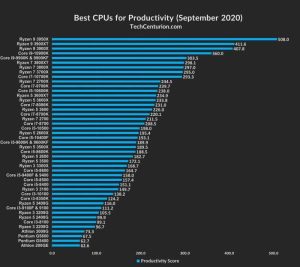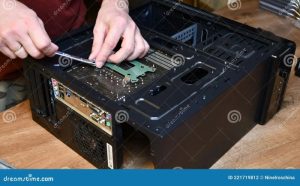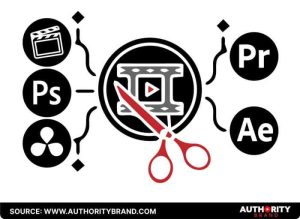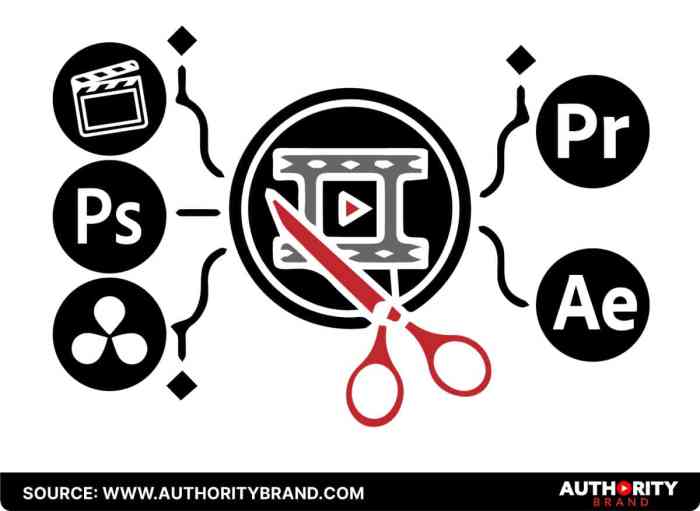
Step into the world of endless possibilities with Video Editing and Multimedia Tools leading the way, where creativity knows no bounds and innovation thrives.
From exploring the key features of popular video editing software to discovering the magic of multimedia tools, this journey promises to be an exciting one.
Video Editing and Multimedia Tools
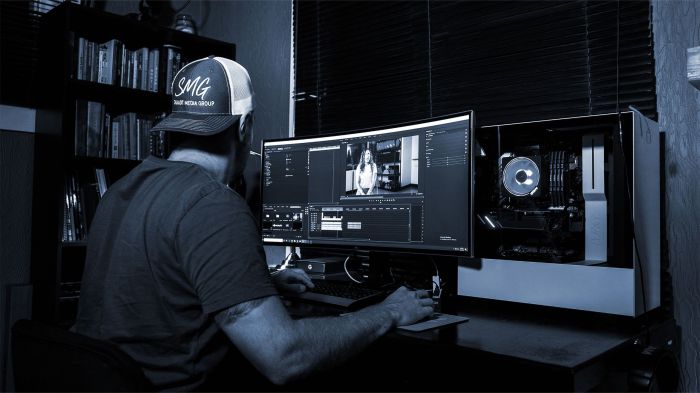
Video editing and multimedia tools play a crucial role in creating captivating content for various platforms. Let’s explore the key features of popular video editing software and the multimedia tools used for enhancing content creation.
Key Features of Popular Video Editing Software
- Adobe Premiere Pro: Known for its powerful editing capabilities, advanced color grading tools, and seamless integration with other Adobe Creative Cloud apps.
- Final Cut Pro X: Popular among Mac users, this software offers a user-friendly interface, fast performance, and a wide range of editing features.
- Davinci Resolve: A professional-grade software with robust color correction tools, audio editing capabilities, and support for high-resolution video formats.
Examples of Multimedia Tools for Creating Engaging Content
- Canva: A versatile design tool that allows users to create stunning graphics, presentations, and social media posts.
- Adobe After Effects: Ideal for creating motion graphics, visual effects, and animations to enhance video content.
- Audacity: A free, open-source audio editing software for recording, editing, and mixing audio tracks.
Comparison of Different Video Editing Techniques
- Linear Editing: Traditional method where video clips are arranged sequentially on a timeline.
- Non-linear Editing: Allows for flexibility in editing by enabling users to work on multiple clips simultaneously and make changes easily.
- Mobile Video Editing: With the rise of smartphone usage, mobile video editing apps offer convenience and quick editing options for creating content on the go.
Electronics and Electrical
In multimedia production, electronics play a crucial role in enabling the creation, editing, and enhancement of various audiovisual content. The integration of electronic devices and components helps streamline the workflow and improve the overall quality of multimedia projects.
Role of Electronics in Multimedia Production
Electronics are essential in multimedia production as they power the tools and equipment used in video editing, graphic design, audio mixing, and other creative processes. These devices help professionals work more efficiently and achieve desired results.
- Computers with high-performance processors and graphic cards are used for video editing and rendering.
- Audio interfaces and MIDI controllers are employed for music production and sound design.
- Monitors with accurate color representation ensure precise editing and color grading.
- External storage devices like hard drives and SSDs store large multimedia files securely.
Electrical Components in Video Editing
Electrical components play a vital role in enhancing video editing processes by providing power, connectivity, and control to various multimedia devices and tools. These components ensure stable operation and smooth functioning of editing equipment.
- Power supply units deliver consistent power to computers, monitors, and other devices.
- HDMI and USB cables enable data transfer between cameras, computers, and displays.
- Surge protectors safeguard valuable equipment from power surges and fluctuations.
- Control surfaces and keyboards provide tactile control over editing software for precise adjustments.
Common Electrical Devices in Multimedia Production Studios
Various electrical devices are commonly used in multimedia production studios to support the creation and editing of audiovisual content. These devices ensure seamless operation and efficient workflow for multimedia professionals.
- Audio interfaces for connecting microphones, instruments, and speakers to recording and editing software.
- UPS (Uninterruptible Power Supply) units to prevent data loss and equipment damage during power outages.
- LED lighting fixtures for illuminating sets and providing optimal lighting conditions for filming.
- Ethernet switches and routers for establishing network connections between devices for file sharing and collaboration.
Computer Repair and Consulting
Regular computer maintenance is crucial for efficient multimedia editing. By keeping your computer in top condition, you can ensure smooth performance and avoid unexpected crashes or errors that could disrupt your projects.
Importance of Regular Computer Maintenance
Regular computer maintenance involves tasks such as updating software, cleaning out temporary files, monitoring system performance, and checking for hardware issues. By regularly maintaining your computer, you can prevent slowdowns, crashes, and data loss that could impact your multimedia editing projects.
- Update software: Make sure your operating system, video editing software, and drivers are up to date to ensure compatibility and optimal performance.
- Clean out temporary files: Regularly clear out temporary files, cache, and unused programs to free up disk space and improve system speed.
- Monitor system performance: Keep an eye on CPU and memory usage to identify any bottlenecks or issues that could affect multimedia editing tasks.
- Check for hardware issues: Regularly inspect hardware components such as hard drives, RAM, and cooling systems to prevent failures that could lead to data loss or system crashes.
Tips for Troubleshooting Common Computer Issues
When facing common computer issues that affect multimedia projects, troubleshooting skills are essential to quickly resolve problems and get back to work.
- Restart your computer: Sometimes a simple restart can fix software glitches or temporary issues that are causing problems.
- Check connections: Ensure all cables and connections are secure and properly plugged in to avoid connectivity issues with external devices.
- Update drivers: Updating drivers for graphics cards, audio devices, and other hardware components can resolve compatibility issues and improve performance.
- Run diagnostic tools: Use built-in diagnostic tools or third-party software to identify and fix hardware problems such as disk errors or memory issues.
Role of Consulting Services in Optimizing Computer Setups
Consulting services play a key role in optimizing computer setups for multimedia tasks by providing expert advice, troubleshooting support, and customized solutions tailored to your specific needs.
Consulting services can help you choose the right hardware components, software tools, and workflow setups to enhance your multimedia editing capabilities and efficiency.
Data Communication
Data communication technologies play a crucial role in supporting multimedia collaborations by enabling the seamless transfer of data, files, and information between different members of a team or project. Through the use of various communication tools and platforms, individuals can effectively share resources, provide feedback, and work together in real-time to enhance the overall quality and efficiency of multimedia projects.
Impact of Data Transmission Speeds
- Data transmission speeds have a significant impact on multimedia editing workflows, influencing the time it takes to upload, download, and transfer large files and media content.
- High-speed internet connections and efficient data transfer protocols can greatly enhance the speed and performance of multimedia editing tasks, allowing for real-time collaboration and seamless sharing of files among team members.
- Slow data transmission speeds can lead to delays, buffering issues, and overall inefficiencies in multimedia editing workflows, hindering the productivity and creativity of individuals working on multimedia projects.
Protocols for Efficient Data Transfer
- One of the key protocols used for efficient data transfer during multimedia projects is the File Transfer Protocol (FTP), which allows for the secure and reliable transfer of files over a network.
- Another commonly used protocol is the Hypertext Transfer Protocol (HTTP), which enables the transfer of multimedia content, such as images, videos, and audio files, over the internet.
- Transmission Control Protocol (TCP) is essential for ensuring data integrity and reliability during the transfer of multimedia files, helping to prevent data loss and errors that can occur during transmission.
Computers E-Books
E-books are a fantastic resource for learning about video editing and multimedia tools. They offer the flexibility to learn at your own pace, access to in-depth information, and the convenience of having all the information you need in one place.
Advanced Techniques in Multimedia Production
- “The Adobe Photoshop Lightroom Classic CC Book for Digital Photographers” by Scott Kelby offers advanced techniques for editing photos in Lightroom, a crucial tool for multimedia production.
- “The Art of 3D Computer Animation and Effects” by Isaac Kerlow provides insight into advanced techniques for creating stunning visual effects and animations.
- “Digital Compositing for Film and Video” by Steve Wright covers advanced compositing techniques used in multimedia production.
Benefits of Digital Resources for Staying Updated on Computer Software
Digital resources such as e-books are invaluable for staying updated on computer software for multimedia tasks. They offer the latest information on software updates, new features, and emerging trends in the industry. With e-books, you can access up-to-date information conveniently and efficiently, ensuring that you are always using the most current tools and techniques in your multimedia projects.
Graphics and Multimedia

Graphics play a crucial role in enhancing multimedia content by adding visual appeal and engaging the audience on a deeper level. Whether it’s through images, illustrations, animations, or visual effects, graphics help to convey information more effectively and make the overall multimedia project more captivating.
Role of Graphics in Enhancing Multimedia Content
- Graphics help in illustrating complex concepts and ideas in a more digestible and visually appealing manner.
- They enhance storytelling by creating immersive environments and engaging visual narratives.
- Graphics improve user engagement and retention by making the content more interactive and visually stimulating.
- They establish brand identity and recognition through consistent use of logos, color schemes, and design elements.
Comparison of Different Graphic Design Software Used in Conjunction with Video Editing Tools
- Adobe Creative Suite: Offers a comprehensive suite of graphic design tools like Photoshop, Illustrator, and InDesign that seamlessly integrate with video editing software like Premiere Pro.
- CorelDRAW Graphics Suite: Known for its vector graphic design capabilities, CorelDRAW is often used in conjunction with video editing tools for creating logos, illustrations, and other graphic elements.
- GIMP (GNU Image Manipulation Program): A free and open-source alternative to paid graphic design software, GIMP provides powerful tools for image editing and graphic design that can be used alongside video editing tools.
- Canva: A user-friendly online graphic design platform that offers templates, stock images, and easy-to-use tools for creating graphics that can be incorporated into multimedia projects.
Importance of Visual Elements in Creating Compelling Multimedia Projects
- Visual elements grab the audience’s attention and create a lasting impression, increasing the overall impact of the multimedia project.
- Graphics help in conveying emotions, setting the mood, and establishing a visual hierarchy that guides the viewer’s focus.
- Well-designed visuals enhance the overall user experience and make the content more memorable and shareable.
- Visual consistency across multimedia projects builds brand recognition and fosters a sense of professionalism and credibility.
Computers Hardware
When it comes to multimedia editing, having the right hardware is crucial for achieving high performance and efficient workflow. Let’s explore the essential hardware components for a top-notch multimedia editing setup and how hardware specifications impact video rendering and processing speed. We’ll also discuss some tips for upgrading computer hardware to enhance multimedia editing capabilities.
Essential Hardware Components for Multimedia Editing Setup
- Processor (CPU): A powerful multi-core processor such as Intel Core i7 or AMD Ryzen 7 is essential for handling intensive tasks like video editing.
- Graphics Card (GPU): A dedicated GPU with high VRAM, like NVIDIA GeForce RTX or AMD Radeon RX series, accelerates video rendering and playback.
- RAM: Sufficient RAM (16GB or more) ensures smooth multitasking and quick access to editing software and project files.
- Storage: Fast SSD storage for the operating system and software, along with a large HDD for storing multimedia files, is ideal for seamless editing.
- Monitor: A high-resolution display with accurate color reproduction, such as an IPS panel, is crucial for visual editing tasks.
Impact of Hardware Specifications on Video Rendering and Processing Speed
- A faster processor and GPU can significantly reduce rendering times and improve real-time playback performance.
- More RAM allows for smoother editing with multiple layers, effects, and transitions in editing software.
- SSD storage speeds up loading times for software and project files, enhancing overall workflow efficiency.
- A high-quality monitor ensures accurate color grading and visual editing precision for professional results.
Tips for Upgrading Computer Hardware for Multimedia Editing
- Upgrade to a faster processor and GPU to boost rendering speeds and improve real-time editing performance.
- Increase RAM capacity to handle larger projects and complex editing tasks with ease.
- Upgrade to SSD storage for faster data access and smoother workflow in editing software.
- Invest in a high-resolution monitor with accurate color reproduction for precise visual editing tasks.
Final Conclusion
As we wrap up this exhilarating exploration of Video Editing and Multimedia Tools, remember that the power to create captivating content is now in your hands – go forth and unleash your creativity!
FAQ Guide
How can I choose the right video editing software?
Consider factors like your editing needs, budget, and learning curve to find the perfect fit.
What are some underrated multimedia tools worth exploring?
Tools like DaVinci Resolve and HitFilm Express offer powerful features for creating engaging content.
How do different video editing techniques vary across platforms?
While mobile editing focuses on simplicity, desktop editing provides more advanced features and control.
